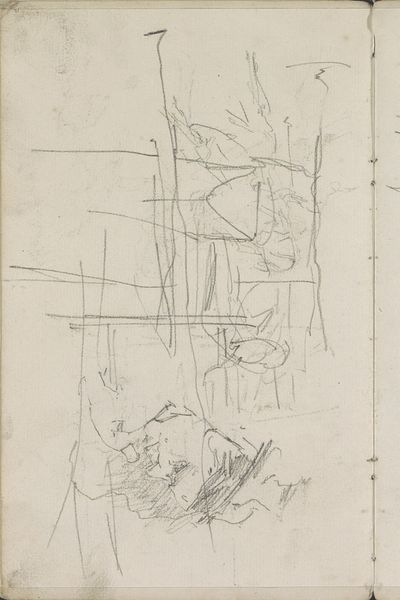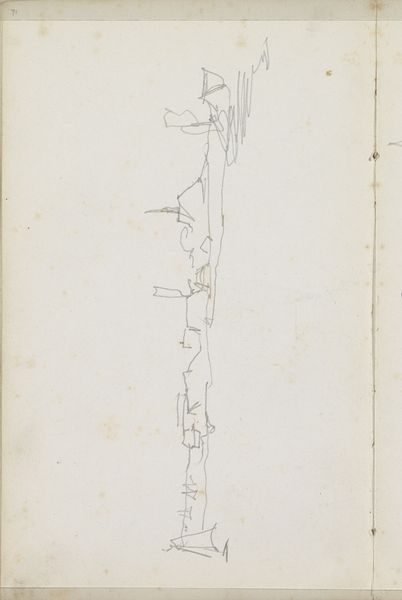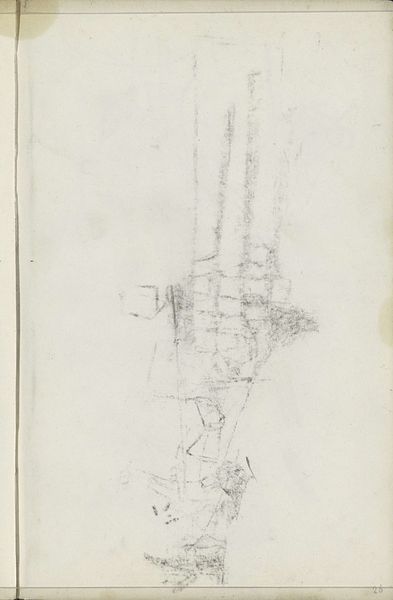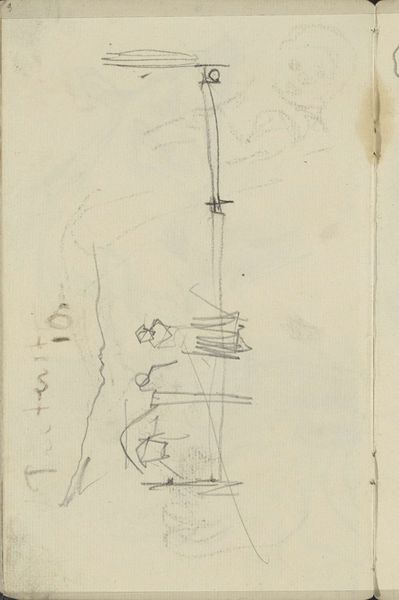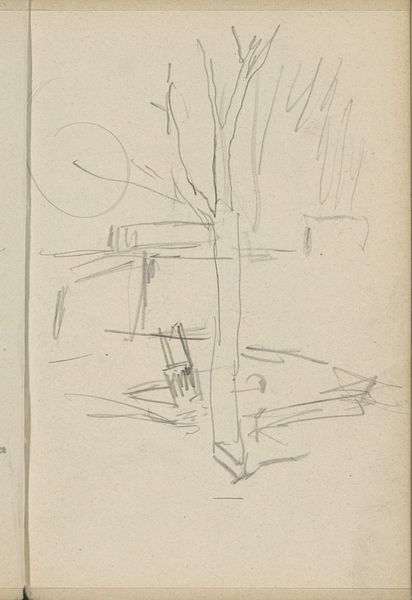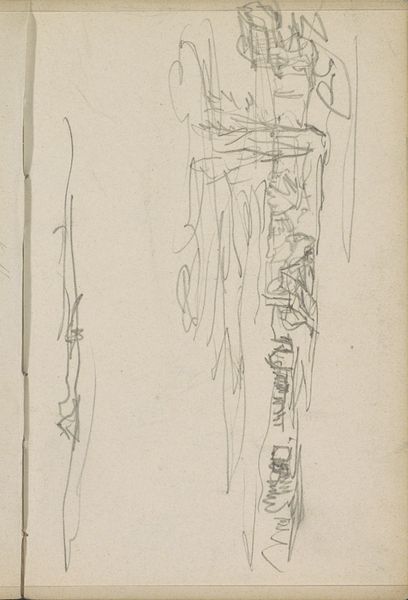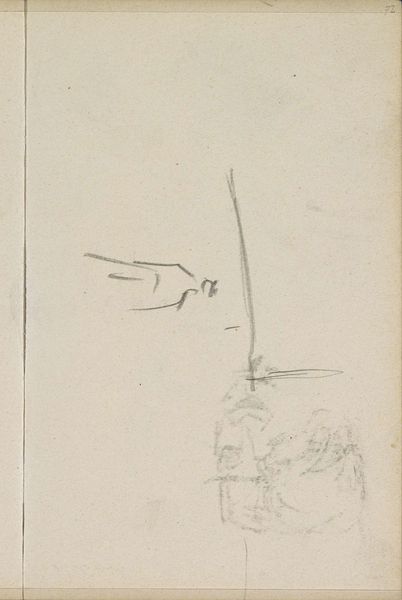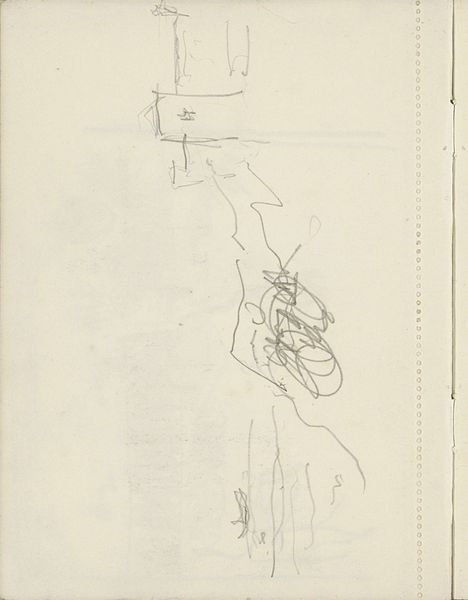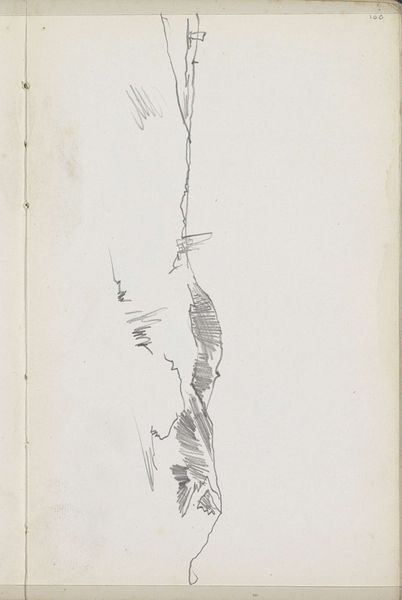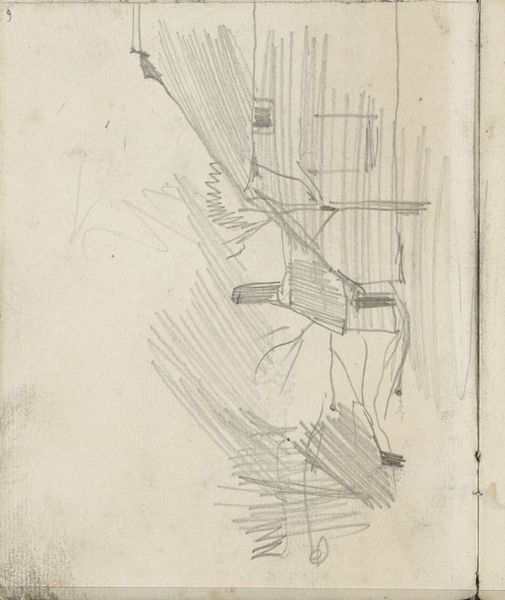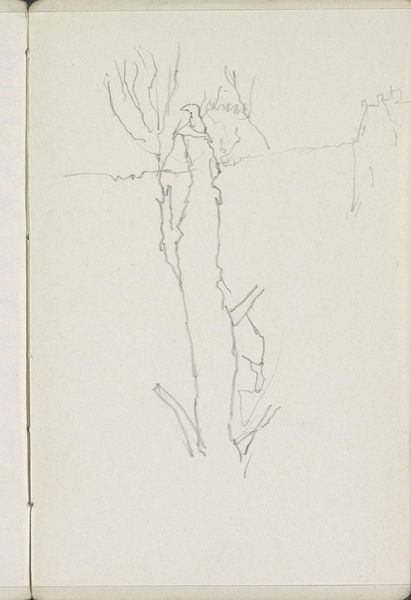
Copyright: Rijks Museum: Open Domain
Editor: So, this sketch is titled "Horses, possibly for a tow wagon," created by Isaac Israels sometime between 1875 and 1934. It’s done with pencil and pen on paper. It's really loose and quick. What catches your eye about this fleeting impression? Curator: I see the tension between movement and stillness. Notice how the quick, almost frenetic lines capture the raw energy of the horses, their potential for pulling and straining, yet they are captured in a static medium, frozen in time on the page. Editor: That makes sense. I hadn’t thought about that contrast. What would the horse have represented culturally? Curator: Horses, particularly working horses like these, have been potent symbols for centuries. Strength, labor, and even freedom, but also, significantly, *burden.* Their visual representation in art reminds us of the essential role animals played in pre-industrial society and, psychologically, the burden of work on both animal and man. Note how the artist uses a minimal of lines to communicate weight. Do you think it succeeds? Editor: I think it does! There’s definitely a sense of the horses leaning into something heavy. How interesting to think of that connection, burden of work and that being conveyed with so few lines. I guess symbols don’t always have to be obvious to be felt. Curator: Precisely! And artists are masters at evoking these deeply ingrained associations with minimal visual cues. Think of other imagery paired with a horse, like a plow or field… how does the artist evoke feelings around those images without explicitly picturing them here? Editor: The skeletal nature, how bare the drawing is… evokes, perhaps, just a small piece of the work needed on the tow. Okay, I think I get it! Thank you for this explanation. Curator: My pleasure! There is so much contained within seeming simplicity.
Comments
No comments
Be the first to comment and join the conversation on the ultimate creative platform.

